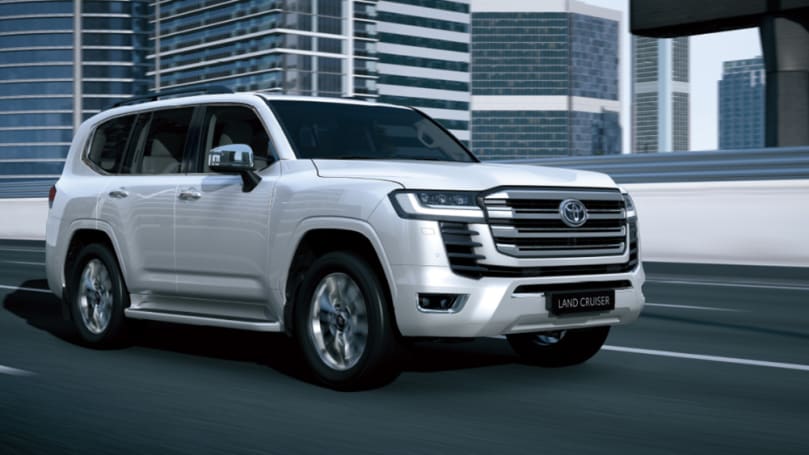
2025 BYD Shark 6 sales scrutinised as rival Kia Tasman ute and plug-in hybrid Ford Ranger PHEV and GWM Cannon Alpha launches loom
BYD Shark 6 fever has well and truly swept over the country, but is it all as...
Browse over 9,000 car reviews

Toyota Australia is expecting its best sales result in over a decade, forecasting around 220,000 sales by year’s end, despite extended wait times for some of its most popular models.
To the end of September, Toyota Australia has sold 176,771 units, which represents a substantial 27.5 per cent jump over the same period in 2020, putting it on track for its third-highest yearly sales behind 2008's 238,983 and 2007's 236,647 totals.
Toyota’s goal is a 7.4 per cent increase compared to its 2020 total of 204,801 units, but to achieve its ambitions, the brand will need to sell around 15,000 units per month for the rest of the year – a feat it believes is possible on the back of strong interest for its line-up.
However, not all models will be readily available this year, with a 75 per cent of its nameplates taking up to six months to be delivered to customers, according to Toyota.
Just a third of its line-up has a waiting time of less than four months, while buyers of the popular RAV4 Hybrid and LandCruiser 70 Series are expected to wait up to 10 months before taking delivery.
As for the soon-to-be-launched LandCruiser 300 Series, only 500 units are confirmed in the country right now, most of which will be dealer demonstrator models, and customers wanting one are advised to wait almost 12 months before getting their hands on one, depending on dealer.
The top-selling HiLux ute will suffer from production constraints this month too, which is expected to limit its volume for the rest of the year and could give the Ford Ranger the advantage it needs to snare the best-selling model crown from its archrival.

However, Toyota Australia vice-president of sales and marketing Sean Hanley said he believes its sales position is secondary to clear communication to its dealers and customers.
“As the pandemic has evolved over the extended period like it has, I think there is a level of understanding by our dealers and our customers,” he said. “It does not in any way dampen the level of frustration that can occur, especially when the situation continues to move and evolve.
“Our philosophy is pretty clear on this, to be quite honest. How we treat customers today, the experience they have with our brand today will determine how well we do tomorrow. It’s as simple as that.
“We understand very clearly that we’ve got to go to extraordinary lengths, even if the news isn’t great, to explain to our customers our situation.

“In the end, we understand there could be customers that just can’t wait … and we want to look after them as much as we’re looking after those who stay with us.
“It’s not complex, it’s not even confusing, do the right thing and customers will stay with you.”
In August, Toyota announced it will reduce production of certain models at some facilities due to the shortage of vehicle supplies and the ongoing global pandemic, putting it in a position where there is simply more demand than stock.
“We simply haven’t been able to get enough vehicles to meet demand,” Mr Hanley said.

“We’re being upfront about all of this; we value the trust we have built with our customers and the best way to maintain that trust is to tell the truth.
“TMC (Toyota Motor Corporation) is working to prioritise production of high-demand models, where possible, it is transferring production to other regions.”
Mr Hanley would not be drawn on when production would return to ‘normal’ levels, but further updates are expected later this month, which will be communicated to customers, dealers and media.

“At this stage, I can’t confirm that timing,” he said.
“We are expecting further updates at the end of October, and at that time I’ll be more in a position to update in relation to the future, and at that stage we’ll also update our dealers and our customers accordingly.”
CarsGuide has contacted Toyota Australia to ascertain exactly how long the wait time is each model.
Comments